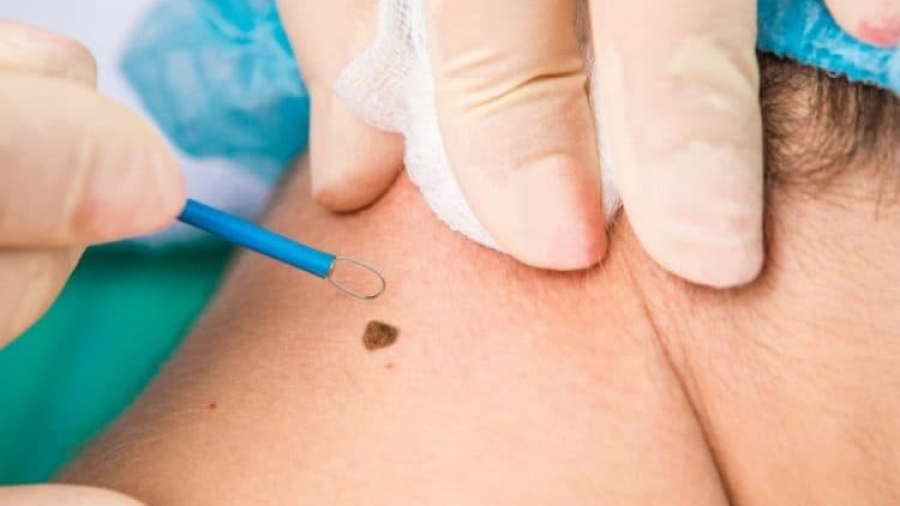Mole removal is an ordinary cosmetic and medical procedure. The healing duration totally depends on the method, mole size, location, and individual elements. This comprehensive guide covers several mole removal techniques, the expected healing timeline, and post-procedure care. Proper post-procedure care, patience, and following medical advice are important for minimizing problems, reducing scarring, and achieving the best possible skin results.
The Mole Removal Procedure
Mole removal is a simple method using surgical ablation, shave removal, or laser treatment. It depends on the mole’s size, location, and reason for removal. The area around the mole is cleaned before the procedure. The process normally takes 15 minutes to an hour. After the procedure, the treated area is cleaned, and then a bandage is applied to it. Detailed aftercare instructions are provided for further healing and to stop infection. Proper wound care is important for a smooth recovery and minimal scarring.
Types of Mole Removal Procedures
Surgical Excision
Surgical excision is a common method for mole removal, especially for larger or potentially cancerous moles. In this procedure, the mole and a small margin of surrounding skin are cut out. Stitches are often required to close the wound. Healing time for surgical excision typically ranges from 1 to 2 weeks. The area may be tender and there might be a scar that fades over time.
Shave Excision
Shave excision involves using a small blade to remove the mole, usually flush with the surrounding skin. This method is generally used for moles that are raised above the skin. Healing from shave excision usually takes about 1 week. The area will scab over and gradually heal, often leaving a flat scar.
Laser Removal
Laser removal is a non-invasive procedure that uses concentrated light to break down mole cells. This method is ideal for small, flat, and pigmented moles. Recovery from laser mole removal is usually quick, with most people healing within a week. The treated area may be red and slightly swollen initially, but this should subside within a few days.
Cryotherapy
Cryotherapy involves freezing the mole with liquid nitrogen. This causes the mole to fall off after a few days. Healing from cryotherapy can take 1 to 2 weeks. The area may blister and scab before fully healing, and there might be some redness or discoloration that fades over time.
Factors Influencing Healing Time
The healing process can vary significantly, affected by a range of factors. These factors can help manage expectations for better recovery. Different factors that affect how quickly your skin heals after mole removal involve the size and Depth of the mole play important roles. Larger and deeper moles take longer to heal than smaller ones. Location is too important as areas with thinner skin, such as the face, may recover faster than areas with thicker skin, like the back. Individual Overall health, like age and lifestyle factors like smoking, affect the body’s ability to heal.
Read more here
Immediate Post-Procedure Period
In the immediate post-procedure period following mole removal, you can hope for some discomfort, redness, and swelling in the treatment area. Proper care is very important for further healing and to stop infection. This includes keeping the area clean and applying any advised ointments. And following your healthcare provider’s specific aftercare guidelines helps for further healing.
Excision: When a mole is extracted, stitches are used to close the wound. The area might be swollen for some days. Stitches are removed within 1 to 2 weeks.
Shave Removal: This method involves the skin level first thing is to shave the mole off. Healing is faster than excision.
Laser Treatment: Laser removal causes small damage, resulting in faster healing times. The area might be swollen, with healing within a week.
The First Week
In the first week after mole removal, expect swelling and redness in the treated area—proper wound care, including gentle cleaning and avoiding picking at scabs. Contact your healthcare provider if you experience serious pain or unusual symptoms.
Week two to four
During weeks two to four after mole removal, we hope for reduced swelling and healing of the treated area. Follow the guidelines to moisturize and protect the skin and reduce exposure to sunlight. Monitor for any changes in skin texture or color and discuss with your healthcare provider.
One to three months
In the one to three months following mole removal, the treated area will continue to settle and heal. Expect a slow decline of any residual redness or discoloration. Continue to follow skincare instructions and observe any signs of concern, ensuring a complete and successful healing process.
Rejuvenate Clinic: Best Mole Removal in London
Rejuvence Clinic understands the importance of mole removal London and the healing time based on the factors like mole size, location, removal method, and individual health. Understanding the healing timeline helps manage expectations that make a quick recovery, allowing for clear, healthy skin. Our experienced team at Rejuvence Clinic uses new techniques to make the best possible results with less downtime and provides personalized aftercare instructions.

